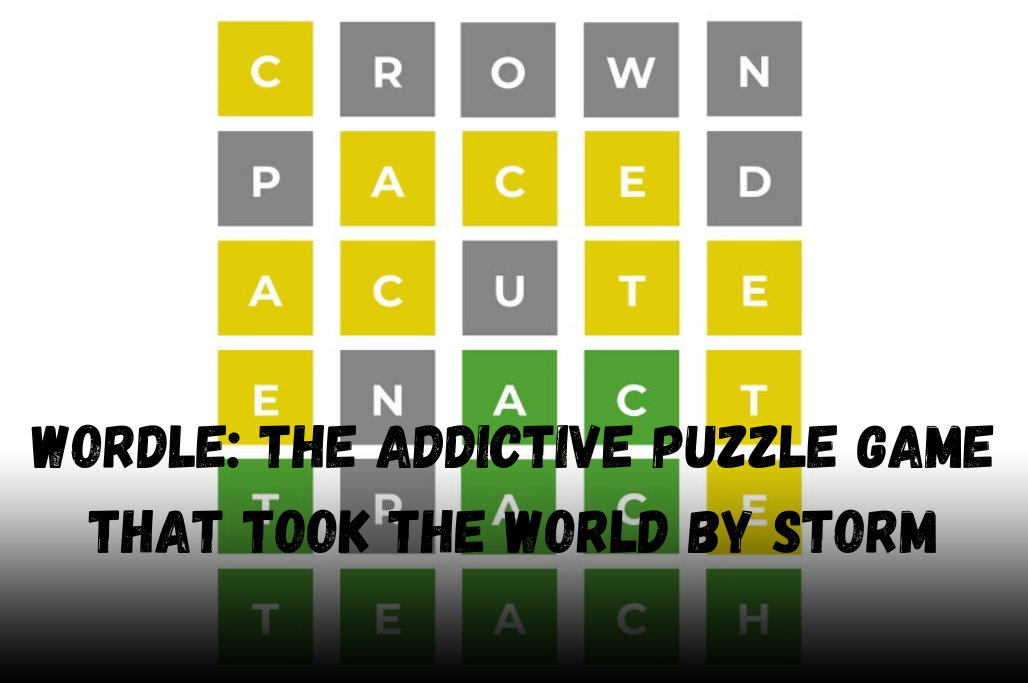In the vast and ever-evolving landscape of online games, few have captured the public’s imagination quite like Wordle. What began as a simple word puzzle has quickly grown into a global phenomenon, with millions of players testing their vocabulary and problem-solving skills daily. But what exactly is Wordle, and why has it become such a beloved pastime for so many?
The Origins of Wordle
Wordle was created by Josh Wardle, a software engineer, as a fun and personal project during the pandemic. Wardle initially designed the game as a gift for his partner, who loved word puzzles. The simplicity of the game’s design and its challenging yet satisfying gameplay made it an instant hit within their circle of friends and family.
Seeing the potential, Wardle released Wordle to the public in October 2021. What happened next was short of extraordinary. The game quickly went viral, spreading across social media platforms like wildfire. By the beginning of 2022, Wordle had become a daily ritual for millions of people around the world.
How to Play Wordle
The premise of Wordle is simple, yet it’s this simplicity that makes it so engaging. Players have six attempts to guess a letter. After each guess, the game provides feedback by colouring the letters:
- Green indicates that a letter is in the correct position.
- Yellow means the letter is in the word but not in the correct position.
- Gray signifies that the letter is not in the word at all.
Using these clues, players must deduce the correct word within the six allotted guesses. The game is both a test of vocabulary and logic, requiring players to think strategically about each guess.
The Viral Spread of Wordle
Wordle’s viral success can be attributed to several factors. One of the most significant is its shareability. After completing the puzzle, players can share their results—without revealing the answer—on social media. The small, colored grid that represents their game progress has become a recognizable symbol, often accompanied by the player’s number of guesses.
This element of sharing not only encourages players to compare their results with friends but also fuels a sense of community among Wordle enthusiasts. The game’s daily reset, where everyone receives the same word to guess, has further strengthened this shared experience, making Wordle feel like a collective challenge.
The Appeal of Simplicity
In an age where many games are designed to be addictive through complex mechanics and microtransactions, Wordle stands out for its simplicity and lack of commercialism. There are no ads, no in-app purchases, and no endless levels—just one puzzle a day. This restraint is part of the game’s charm, offering players a brief yet satisfying mental exercise without any pressure to keep playing beyond their daily puzzle.
Wordle’s minimalist design also makes it accessible to a broad audience. It requires no downloads or sign-ups; anyone with a web browser can play. This ease of access, combined with its universal appeal as a word game, has made Wordle popular across age groups and demographics.
The New York Times Acquisition
The meteoric rise of Wordle did not go unnoticed by major media companies. In January 2022, The New York Times announced that it had acquired the game for an undisclosed seven-figure sum. The acquisition was part of the Times’ broader strategy to expand its portfolio of digital games, which already included popular offerings like the crossword puzzle and Spelling Bee.
The Times assured players that Wordle would remain free to play and largely unchanged, although the game was eventually moved to the Times’ website. This acquisition highlighted Wordle’s status not just as a passing trend, but as a significant cultural touchstone in the world of online gaming.
Wordle’s Cultural Impact
Wordle’s impact extends beyond just the gaming world. It has inspired a range of spinoffs and clones, each putting a unique twist on the original concept. Games like “Quordle” and “Heardle” have built on Wordle’s mechanics, offering variations that cater to different interests, such as guessing four words simultaneously or identifying songs based on short audio clips.
Moreover, Wordle has become a source of daily conversation, with people discussing their strategies, sharing their streaks, and even debating the difficulty of certain words. It has been a unifying force, bringing together people of all backgrounds in a shared love of wordplay.
The Future of Wordle
As Wordle continues to evolve under the stewardship of The New York Times, its future looks bright. The game’s enduring appeal lies in its perfect balance of challenge and accessibility, combined with the daily ritual it has created for millions of players worldwide. Whether you’re a seasoned wordsmith or a casual player, Wordle offers a daily dose of fun that’s hard to resist.
As new puzzles emerge each day, and as the game’s community continues to grow, Wordle’s place in the pantheon of iconic online games seems secure. It’s a testament to the power of simplicity in an increasingly complex digital world, and a reminder that sometimes, the most addictive games are the ones that bring us together in the simplest ways.
FAQs:
- What is Wordle? Wordle is a daily word puzzle game where players have six attempts to guess a five-letter word, with color-coded feedback provided after each guess.
- Who created Wordle? Wordle was created by software engineer Josh Wardle as a personal project during the pandemic.
- Why did Wordle become so popular? Wordle’s popularity stems from its simplicity, shareability on social media, and the sense of community it fosters among players.
- How did The New York Times acquire Wordle? The New York Times acquired Wordle in January 2022 as part of its strategy to expand its digital games portfolio.
- Will Wordle remain free to play? The New York Times has assured players that Wordle will remain free to play and largely unchanged following the acquisition.

